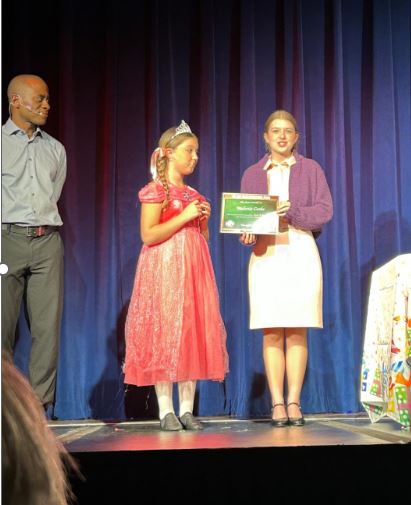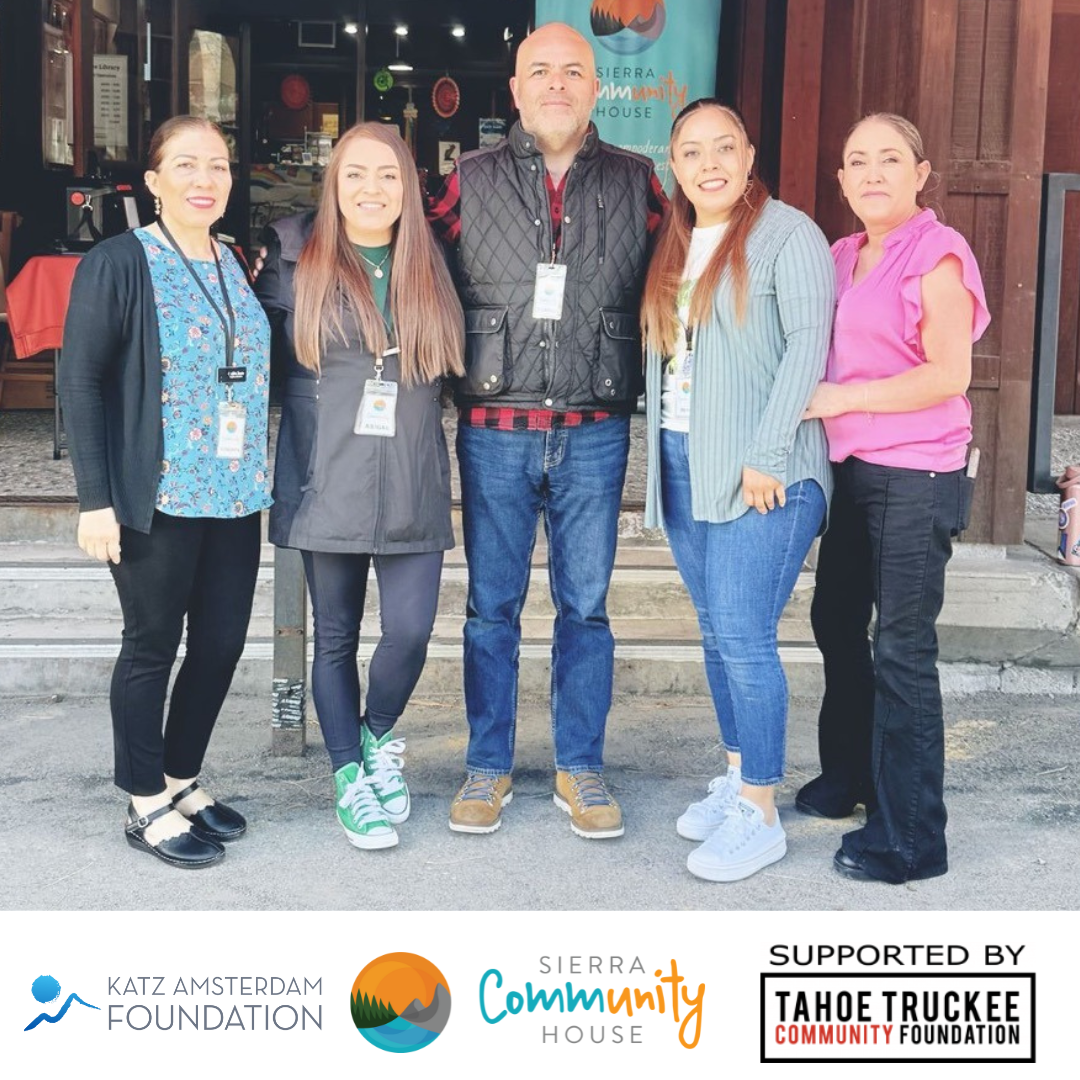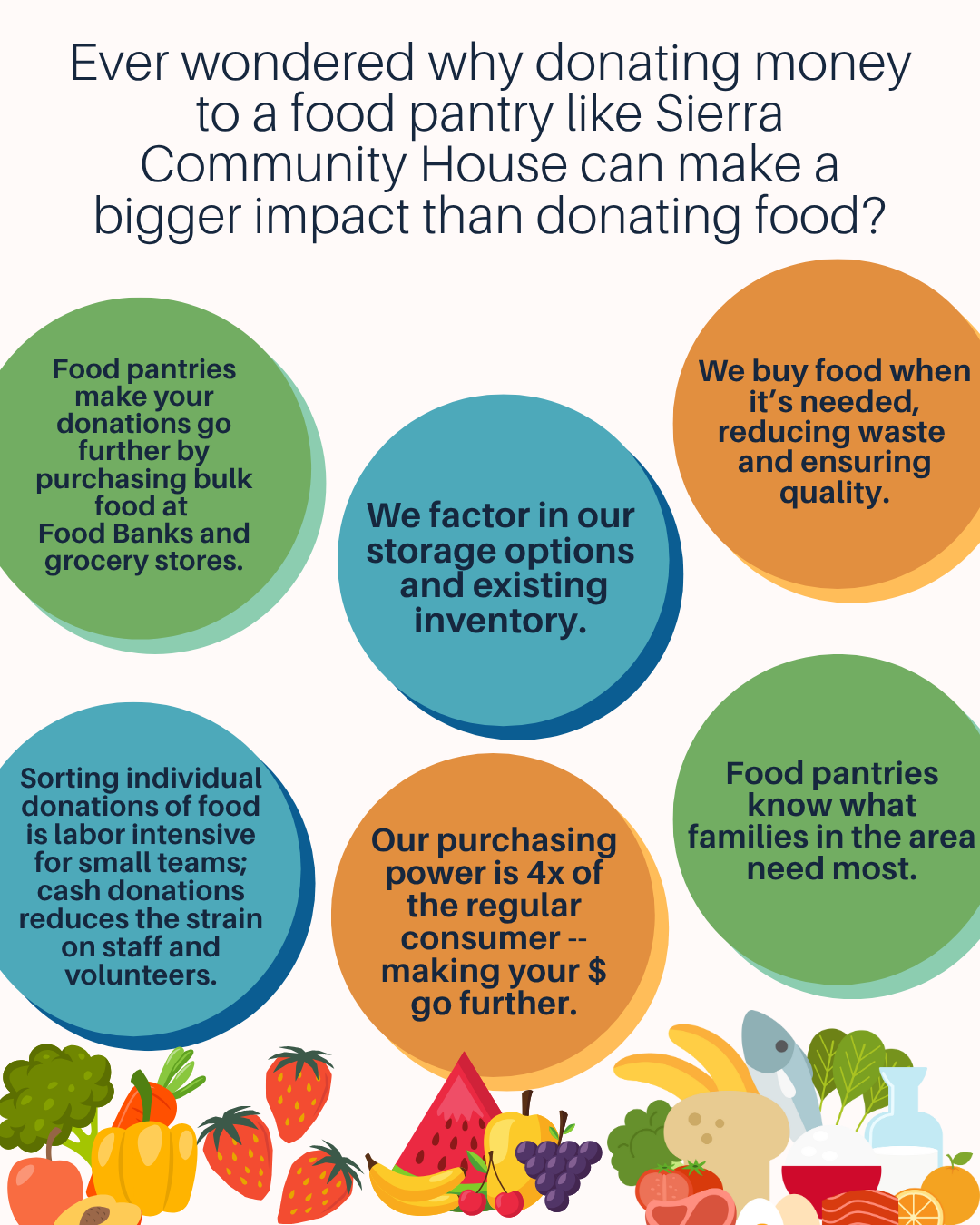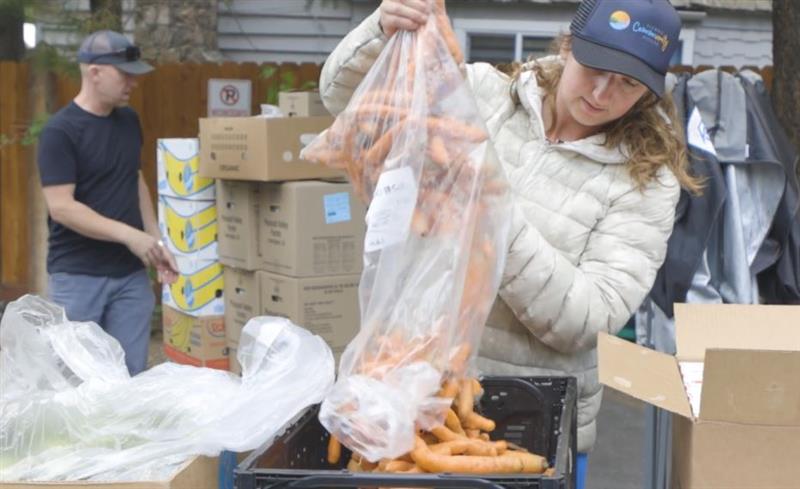Understanding, recognizing, and responding to abuse
If you are in immediate danger, call 911.
If you need to speak with someone confidentially, call the Sierra Community House 24-hour Helpline at (800) 736-1060 for support in English or Spanish.
You Are Not Alone
Domestic violence can happen to anyone, regardless of age, gender, income, or background. At its core, domestic violence is about one person using power and control to dominate another. It may include physical harm, threats, intimidation, emotional manipulation, financial control, or isolation.
At Sierra Community House, we believe that everyone deserves to feel safe, respected, and free from violence. This page offers tools to help you understand the dynamics of abuse, recognize warning signs, and find support — whether you’re concerned for yourself or someone you care about.
What Is Domestic Violence?
Domestic violence, also called intimate partner violence (IPV), is a pattern of behaviors used to gain power or control over a partner. It can take many forms, including:
- Physical abuse: hitting, shoving, restraining, or other physical harm.
- Emotional abuse: insults, gaslighting, humiliation, or threats.
- Financial abuse: controlling access to money or resources.
- Sexual abuse: unwanted sexual activity or coercion.
- Digital abuse: monitoring phone or social media, tracking devices, or online threats.
Abuse is never your fault — and help is available.
The Power and Control Wheel
The Power and Control Wheel illustrates how abusers maintain control through a pattern of nonphysical tactics — intimidation, isolation, emotional abuse, minimizing, blaming, and more — often reinforced by physical or sexual violence.
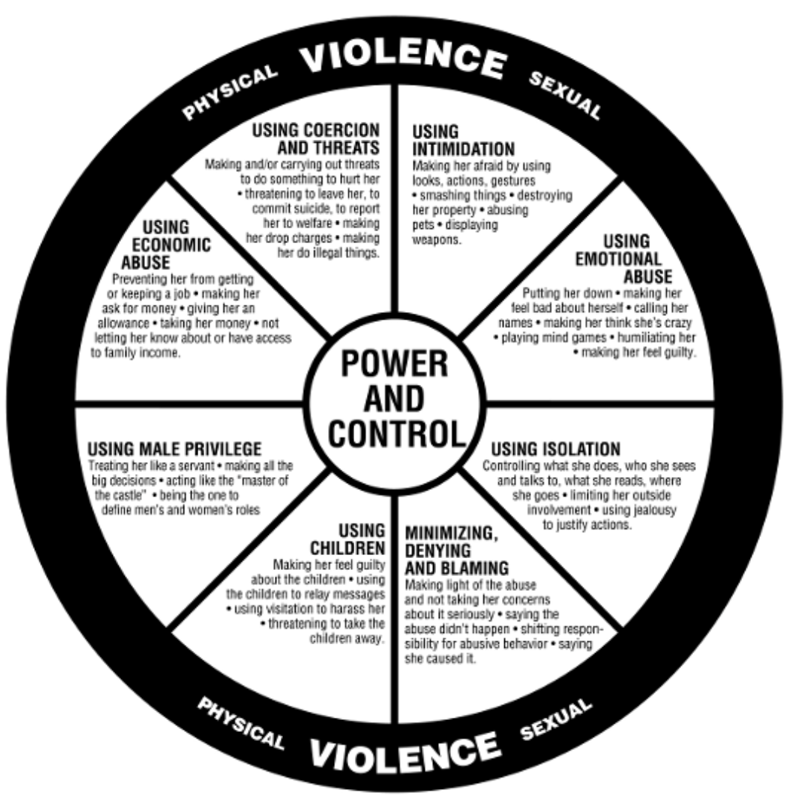
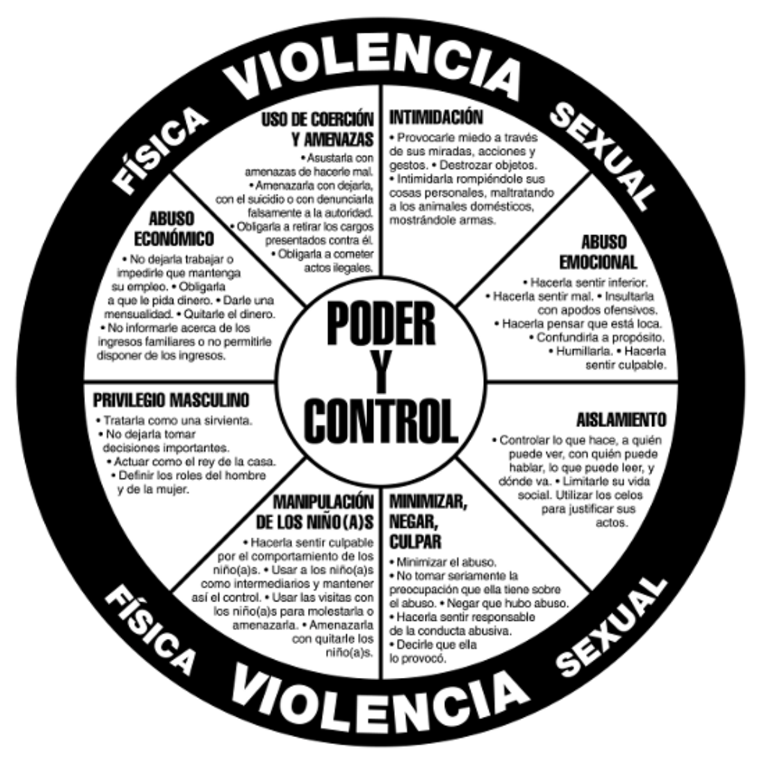
Recognizing these patterns can help survivors and their supporters understand that abuse is not about anger or conflict — it’s about control.
The Cycle of Violence
Many abusive relationships follow a repeating cycle:
- Tension Building: Stress, jealousy, or anger escalate; survivors may feel like they’re “walking on eggshells.”
- Incident: An episode of physical, emotional, or verbal abuse occurs.
- Reconciliation / Honeymoon: The abuser apologizes, blames others, or promises to change; affection may temporarily return.
- Calm: The relationship appears stable — until tension builds again.
Understanding this cycle can help explain why survivors may stay or struggle to leave. Each stage is part of a predictable pattern, not an isolated event.
Warning Signs & Red Flags
You may be experiencing abuse if your partner:
- Puts you down or makes you feel worthless.
- Controls where you go or who you see.
- Tracks your phone, social media, or location.
- Controls all finances or denies access to money.
- Threatens to harm you, themselves, or loved ones.
- Forces or pressures you into unwanted sexual activity.
If these behaviors sound familiar, you are not alone — and there is support available.
Explore more on NCADV’s “Do You Think You’re Being Abused?”
Why People Stay
Leaving an abusive relationship is often complicated. Survivors may stay because of love, fear, finances, children, housing, immigration concerns, or hope that things will improve. None of these reasons mean they want or deserve abuse — they reflect the difficult, often dangerous realities survivors face.
Our advocates understand these challenges and can help create a personalized safety plan for your situation.
Safety Planning
A safety plan is a practical guide to help you stay safe whether you choose to leave, stay, or are unsure. It can include steps like:
- Keeping copies of important documents in a safe place.
- Identifying trusted friends or family who can help in an emergency.
- Planning where you could go if you needed to leave quickly.
- Using safe devices and being aware of digital tracking.
You can speak with a Sierra Community House advocate 24/7 at (800) 736-1060 to create a confidential safety plan.
Learn more about safety planning at The National Domestic Violence Hotline
Local & National Resources
Sierra Community House Crisis Line (24/7)
(800) 736-1060 | Confidential, bilingual support
Sierra Community House Services
- Emergency shelter and housing support
- Advocacy and safety planning
- Counseling and support groups
- Legal assistance and court accompaniment
- Community education and prevention programs
Learn more about our Crisis Intervention & Prevention services
National Hotlines & Organizations
- National Domestic Violence Hotline: 1-800-799-SAFE (7233), thehotline.org
- National Coalition Against Domestic Violence (NCADV): ncadv.org
- Love Is Respect: loveisrespect.org — support for teens and young adults
For Friends and Family
If you’re worried about someone you know, listen without judgment, believe them, and remind them that help is available. Avoid pressuring them to leave — instead, offer resources, emotional support, and patience.
You can always reach out to Sierra Community House for guidance on how to safely support a loved one.
You Deserve Safety and Respect
Everyone deserves relationships built on trust, equality, and respect.
If you or someone you know needs help, call (800) 736-1060 anytime — day or night.
Your call is confidential, compassionate, and could be the first step toward safety.
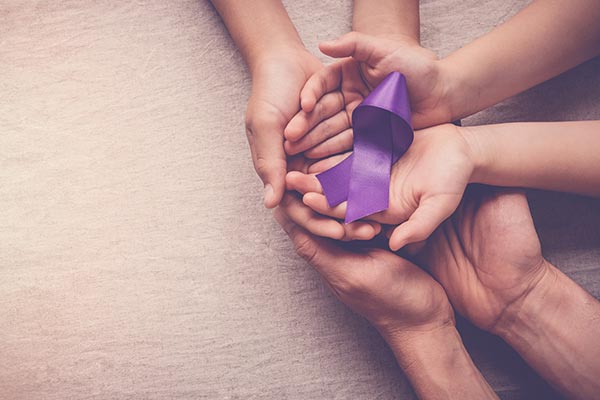
Recent News

